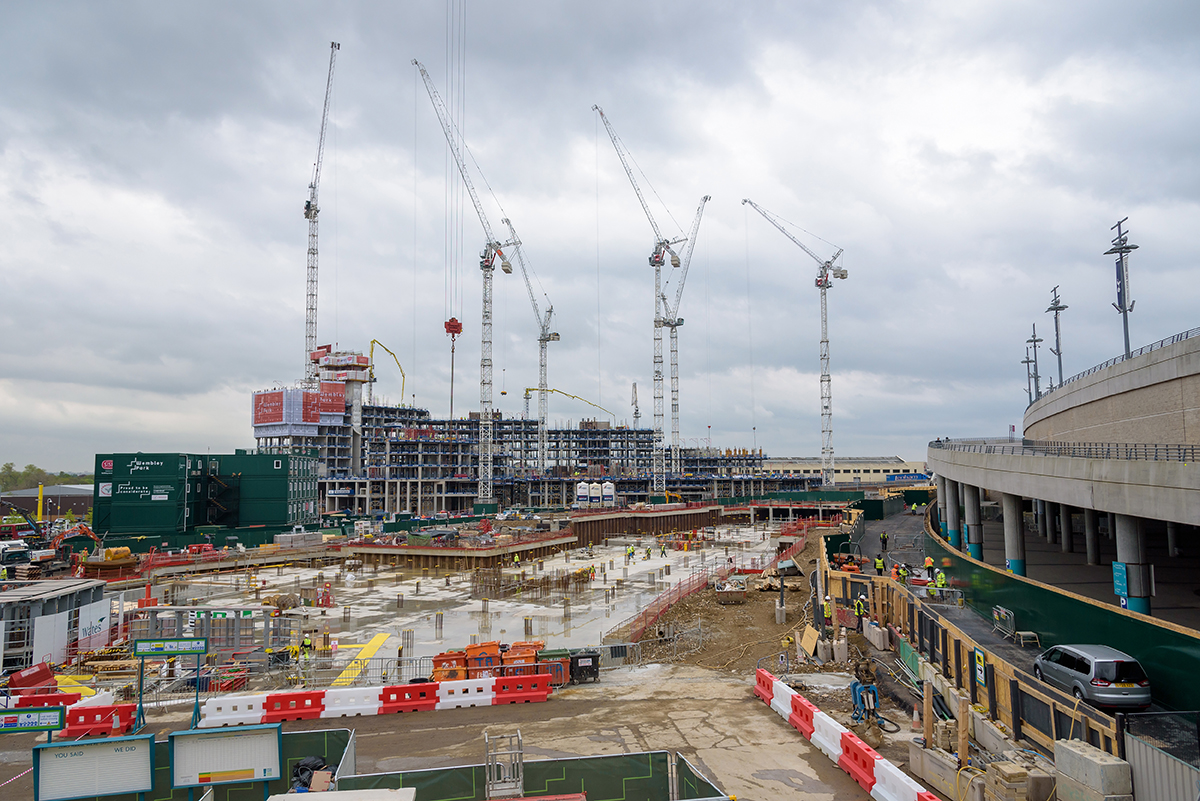How can weather data and advice be harnessed to support project delivery?
Our climate is changing. Over the past decade, the UK has experienced eight of the 10 warmest years on record, five of the 10 wettest years, and 2019 will be remembered for the hottest day on record in the UK with a maximum temperature of 38.7°C recorded in Cambridge.
Climate projections for the UK show that some of the greatest risks now and in the future are higher maximum daily temperatures and flooding as a result of more extreme weather events which would have clear impacts for the construction industry.
Over the past six months, the Met Office and BIM today have been looking at the integration of weather and climate data across the construction project lifecycle to support the design of resilient buildings in relation to short-term weather events, and longer-term changes to our climate.
In this edition, we look at the next step of how weather data and advice can be used to support the project delivery and build. Specifically, we will be looking at the online tools available to project managers, location-specific data and how you can utilise an operational meteorologist’s advice.
Is your construction as time and cost-efficient as possible?
Project overruns are already common within the construction industry. To address the cost of overruns, it’s important to identify how those overruns occur. While there are often unforeseen complex issues causing project delays, there are also others that can be predicted and planned for, such as the weather.
There are many weather variables that can affect a building project, from strong winds, low and high temperatures to rainfall and the subsequent soil moisture.
Construction contracts generally provide for the contractor to claim loss and expenses as a result of the project being affected by the weather for which the client is responsible, but what if there were ways to plan for these events? What if you prepare for the impacts of these events before they happen?
This is where the weather forecast comes in.
Why use tools specifically designed for the industry when there are freely available forecasts on TV, radio and apps?
TV weather forecasts only tend to look ahead to the next few days because once you look further, it’s much more difficult to illustrate the unpredictability of the weather. For most projects’ management applications, while a couple of days forecast is useful, there are also benefits in looking further ahead throughout the week. That’s where probabilistic forecasts come in.
Available for up to 14 days, a probability forecast describes how likely a weather event is to occur. It helps to assess risk more accurately. For example, knowing that there is a 60% chance of rain or 5% chance of strong wind in 10 days’ time, you can plan activities such as working at height, painting or digging trenches accordingly.
Be mindful that it’s not just severe weather that might hamper a construction project, so although it’s important to take account of national severe weather warnings – particularly when it comes to the safety of your staff – it’s also important not to rely on them alone to inform your build.
Changeable weather conditions can be just as costly in terms of both time and money, and different stages of construction will be sensitive to different weather parameters and thresholds. A public weather forecast won’t include this level of detail.
Our construction team at the Met Office has developed location-specific weather monitoring and alerting services for construction project managers. These services can forecast out to 14 days, highlight weather patterns of concern and allow users to set warnings based on their own specific parameters and thresholds.
When you’re uncertain about upcoming weather or are facing an important weather-dependent decision – Talk to a Forecaster
The Met Office’s Talk to a Forecaster service provides a dedicated line to the Met Office operational meteorologists. Available 24/7, 365 days a year, operational meteorologists can focus on any aspect of weather that is important to you.
With their weather expertise, they can help you understand weather forecasts in the context of your project and give you a much greater certainty as to what conditions you may experience at your site. They can clarify any uncertainties within the forecast, enabling you to make a sound and sensibly judged decision. Using Met Office experts’ advice will help you make smarter decisions around whether a certain task should be undertaken or not.
To easily monitor weather conditions on your site and support your operational decisions – VisualEyes
VisualEyes is our easy-to-use, online weather monitoring and alerting tool. It provides a graphical and map view of the weather to help you understand what conditions you may experience on your site and in the broader region out to 14 days. It will continuously inform you of a wide range of weather parameters including rainfall, temperature, wind speed, lightning risk and many more.
If you are working at certain heights, VisualEyes can provide wind speeds and gusts at the height you require. With all these parameters you can set your own Amber and Red alerts. When an alert is triggered, text message and email will be sent to all users on site who require it.
The biggest benefit of VisualEyes is that by providing site-specific forecasts and alerts, as well as thresholds applicable for the task in question, it becomes an efficient decision-making tool. It supports you in your planning and day-to-day operations, helping you identify optimum weather windows, reduce downtime and manage weather-related health and safety risk. VisualEyes monitors lightning strikes and wind speeds at various heights, so knowing when those risks occur can mitigate accidents and near misses.
The weather data is interpreted for you so you can save time, have greater confidence in the forecast and focus on what you do best – project management.
The following example illustrates when VisualEyes has been used to meet a tight deadline:
“Installing the new subway at Hackney Wick Overground Station was an incredible feat of engineering, which was dependant on the right weather conditions being in place. By being given solid, up-to-the-minute data, my team was able to make an informed decision on whether to go ahead with the work and, as a result of a successful period of construction, we are making excellent progress on delivering improved transport facilities for residents and workers in the Hackney Wick area.”- Janet Townsend, director of development, London Legacy Development Corporation.
Conclusion
Overrunning estimates on construction projects is something that cannot be solved overnight. They are complex, and the weather is just one factor of that complexity. However, the benefits of mitigating the impacts of the weather on a project far outweigh the costs of the information. Weather data should always be considered in order to deliver the future buildings, roads, airports railways, water and sewage works and flood defences on time and on budget. They also help ensure the health and safety of staff onsite. The more efficiently and safely our future infrastructure is developed, the greater potential returns on the project and the greater socio-economic benefit those projects deliver.
For further information please contact our Construction Team at: construction@metoffice.gov.uk, or visit our construction page.
Met Office
Tel: 0370 900 0100
www.metoffice.gov.uk/construction
Please note: this is a commercial profile.














